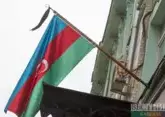The peoples of the South Caucasus are characterized by their ability to consolidate: the family, clan and friendship bonds have always been of sacral significance here. But recently these traditions have been opposed by a deliberate policy of dividing peoples, the history, culture, traditions and mentality of which has been closely intertwined for centuries. This primarily refers to the Armenian-Azerbaijani relations.
The age-old standoff between the peoples is currently grabbing blogging headlines. Bloggers see their task in making the Nagorno-Karabakh conflict look more ancient, linking it with the tragic fragments of history.
There were few nations in the world that did not enter into disputes or conflicts with neighbors at one time or another in their history. The Hundred Years' War in the 14th–15th century, the 1870-1871 Franco-Prussian war, two monstrous world wars do not prevent the modern British, French, Germans, Belgians, Italians from maintaining good neighborly relations within the framework of a united Europe. The 1993 dissolution of Czechoslovakia did not prevent modern Czechs and Slovaks from getting along within the framework of the same European Union.
It is extremely difficult to prove the role of the "ethnic hatred" factor, since any conflict is a combination of many causes and factors, moreover, as a rule, people start to talks about "age-old" hatred already after the conflict had flared up.
Given the unreadiness of the Armenian and Azerbaijani cultures for conflicts or aggressive behavior, a special role in the formation of a certain behavior was played by imposed patterns and narratives. The modern Armenian citizen is unlikely to be able to tell about the ethnogenesis of Armenians, about the nation-building process, but he knows numerous heroic stories from the people's history, and can tell about tragedies that put the Armenians to the test. The heroic past removes responsibility from the people, and the emphasis on tragedy prompts them to act. Azerbaijan’s view of relations in many respects appeals to Armenia’s glorification of the outcome of the Karabakh war, which not least resulted in the exodus of many thousands of refugees, including outside the former Nagorno-Karabakh Autonomous Region. Modern Azerbaijanis recognize the centuries-old Armenian neighborhood, noting that they themselves, having formed as a single multinational people, never set a goal to destroy Armenian statehood. Therefore, the Nagorno-Karabakh conflict is purely territorial issue for Azerbaijan, in which the patterns of Armenian separatism play a key role.
When the Soviet Union collapsed and every nation embarked on the path of choice, Armenian nationalists in search of the enemy turned to historical myths as a unifying force. In modern Armenian-Azerbaijani relations, using the example of Armenia, one can notice how the late 1980s patterns manifested themselves in new conditions and new generations of Armenians. The illusion of struggle deprives them of the opportunity to conduct a comparative analysis of history textbooks in order to identify erroneous information, freeing the relations area from gross nationalist interpretations and offensive prejudices.










